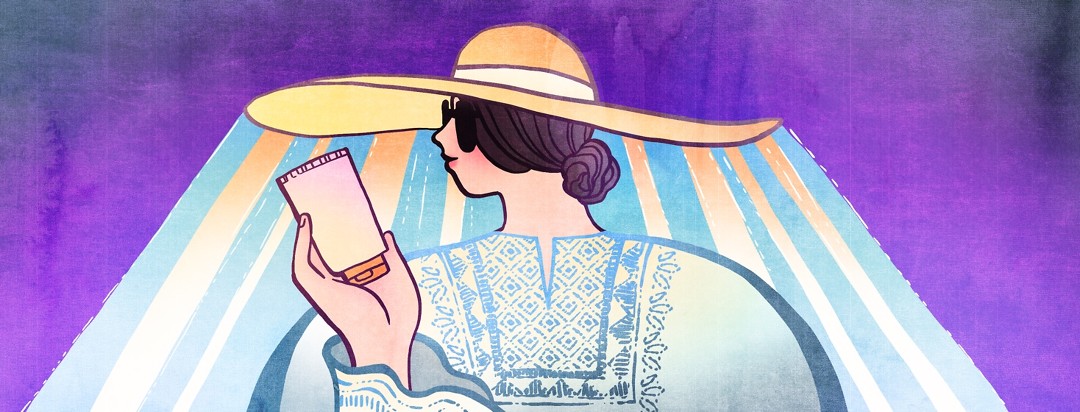Understanding UV Protection During UV Awareness Month
Summer is here, the weather is warming up even in the most northern parts, and the solstice has just passed, giving us longer days and sun-light evenings. Along with the shorts and sunglasses comes the yearly deluge of ultraviolet rays, or UV rays. And along with those come the tips to stay safe in the sun for the summer.
UV rays and skin cancer
To be safe, we need to understand the difference between UV rays and the types of protections we need. UVA and UVB rays are the ones most commonly referenced, and although there are others, these are the two to be concerned about:
UVA rays
UVA rays are the ones that give you the tan sun-worshippers crave; they are also responsible for giving you the wrinkled aged look as you get older that many fewer people aspire for. They are also the light found in tanning beds, which we’ll get to in a minute.
UVB rays
UVB rays are the ones that get you burnt, which is not a good thing. They are also more likely to cause melanoma, which is definitely never a good thing.
What is UV index?
First up, know the UV index; all weather services will give this as a number for the most intense part of the day. Some will even give this on an hour by hour basis, although that can change very much based on location. The scale rates from 0-10+, with a 6 or 7 considered high, 8, 9, and 10 very high, and 11+ extreme.
Cloudy days will lower the UV index, BUT not completely. The biggest mistake many make during the summer is feeling a cool breeze under a cloudy sky and thinking, “Well, no need for sunscreen.” Those pesky UV rays do sneak through clouds, and many a Florida vacationer has woken up wondering how in the world they got so red when it wasn’t even sunny out.
Sun protection
Before you go out and about, is the time to think about being out and about. Sun protection has traditionally been...less comprehensive than necessary. Nothing can fully block ALL of the sun’s UV rays except, well, not being in the sun. But for both work and play, it is difficult to stay indoors all the time (especially when coming out of several months of homeschooling and working from home)! So understanding how to protect and when – and why – is critical to enjoying everything that comes with a summer outdoors, except the red dermis.
Broad-spectrum sunscreen
Broad-spectrum sunscreen is the most common defense for sun protection. It comes in several forms and is often readily available in drug stores, supermarkets, and any place that sells something outdoors. Understanding the various permutations of sunscreens is an education in itself. The number on the bottle – say, SPF 45 – is a relative measure, and only accounts for UVB ray protection (although broad-spectrum sunscreen protects against both, only the UVB blocking is measured).
Effectiveness of sunscreen
The scale isn’t easy to understand, but loosely translates into 1 minute of unprotected sun exposure per SPF time frame; over 45 minutes, and SPF 45 sunscreen gives you the same amount of exposure as 1 minute with no sunscreen. An SPF of 30 gives that to you in 30 minute, etc. However, thinking of UV protection via time can be misleading to the point of being dangerous. ALL sunscreens begin to lose their UV protection within two hours; more if you are sweating or swimming. So you cannot just slap on SPF100 and think you are good for the day. It’s better to think of the different types of SPF sunscreens as the higher the number, the more effective the sunscreen is at blocking UVB rays *for up to two hours*. Most dermatologists now recommend a SPF30 or higher broad-spectrum sunscreen.
The dangers of tanning beds
Some kinds of UV rays are simply no good, no matter what the circumstances. Unprotected sun in the middle of a blistering summer day is one of those times. Using a tanning bed is even worse. There are some great talking points for getting a tan, and none of them sound any good when you tack on “but you increase your chance of melanoma by 75% as soon as you step into one of these bad boys.” Don’t try and extend this summer’s look using tanning beds, because they are concentrated UVA rays that can and will cause skin cancers, including melanomas. Staying safe in the sun has some leeway for shade and reapplication, but being smart and staying away from tanning beds (and UV-light nail salons!) is a no brainer.
Planning for the sun
The best defense against harmful UV rays is a combination of efforts. Loose-fitting long sleeves and a wide-brimmed hat, supplemented with sunscreen and planning some time out of direct sunlight in midday is the most effective way to mitigate UV exposure. You COULD just stay inside all day, I suppose, but where is the fun in that? Take it from someone who has survived melanoma twice and still enjoys most of the activities he always did – just now with a little more planning, a little more clothing, and a little more zinc oxide.

Join the conversation